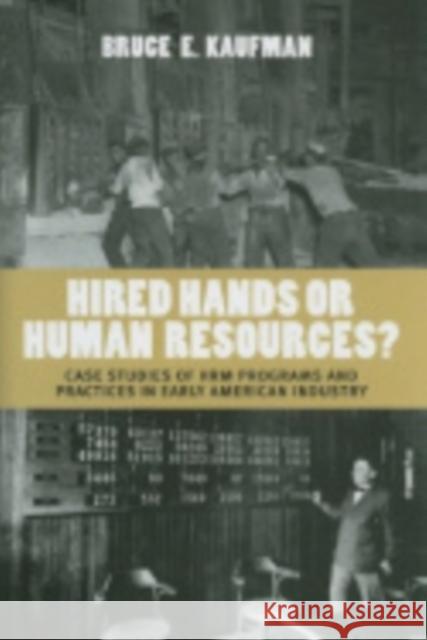Hired Hands or Human Resources?: Case Studies of Hrm Programs and Practices in Early American Industry » książka
Hired Hands or Human Resources?: Case Studies of Hrm Programs and Practices in Early American Industry
ISBN-13: 9780801448300 / Angielski / Twarda / 2009 / 280 str.
Hired Hands or Human Resources?: Case Studies of Hrm Programs and Practices in Early American Industry
ISBN-13: 9780801448300 / Angielski / Twarda / 2009 / 280 str.
(netto: 269,44 VAT: 5%)
Najniższa cena z 30 dni: 281,76
ok. 30 dni roboczych
Bez gwarancji dostawy przed świętami
Darmowa dostawa!
In a companion volume to Managing the Human Factor, also from Cornell, Bruce E. Kaufman shows how American firms transitioned from the traditional "hired hand" model of human resource management (HRM) to the modern "human resources" version popular today. Kaufman illuminates through fifteen detailed case studies the structure and operation of HRM programs and practices across a diverse range of American business firms spanning the fifty years from 1880 to 1930.Nine of the fifteen case studies in Hired Hands or Human Resources? examine HRM before World War I and document the highly informal, decentralized, externalized, and sometimes harsh nature of the people-management practices of that era. The remaining six span the Welfare Capitalism decade of the 1920s and reveal the marked transformation to a more progressive and professional model of personnel practice at some companies, along with continued reliance on the traditional model at others.Kaufman gained access to the richly detailed audits of company HRM programs prepared during the 1920s by Industrial Relations Counselors, Inc., and draws upon this trove of information to present the most in-depth, up-close evidence available of how companies of this period managed their employees and how the practice of HRM evolved and developed. Hired Hands or Human Resources? features new insights into key subjects such as the strategic versus tactical nature of early HRM, alternative models of workforce governance used in these years, and the reasons some companies created autonomous HRM departments.











